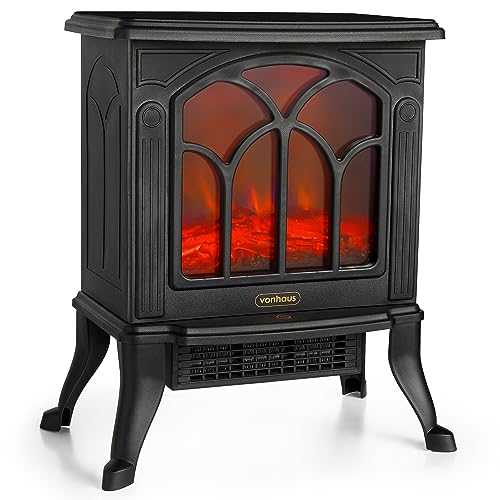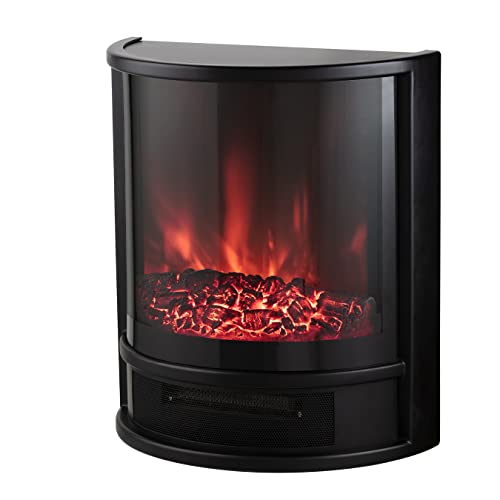Why You Should Not Think About The Need To Improve Your Wood Burner Fi…
Bernd
2024.12.09 17:24
181
0
본문
 How to Get the Most From a Wood Burner wall fireplace
How to Get the Most From a Wood Burner wall fireplaceUnlike traditional open fireplaces wood stoves are engineered and designed to burn firewood. This allows them meet the stricter emission requirements.
Wood burning stoves offer dancing yellow flames, cosy crackling sounds, and that primordial sensation of warmth. However the smoke that it produces is contaminated with carbon monoxide as well as toxic air pollutants such as formaldehyde, benzene and polycyclic aromatic hydrocarbons.
Efficient
Fireplaces and stoves that burn wood provide a beautiful and natural heat to the home, and they are extremely efficient. A high-quality wood burner can achieve an Ecodesign rating of as high as 77%. With rising energy costs it is important to ensure that you get the most benefits from your log burner The good news is that this is much simpler than ever!
One of the main factors that determines the efficiency of a wood burning stove is will be the water content of the wood. We recommend using only seasoned wood that has been dried for at least one year and often two years. The more dry the wood more dry, the better it burns. This means less smoke and less harmful emissions.
Another great benefit of a wood burning stove is that it's a low carbon source of fuel, which is fantastic for the environment. By purchasing locally sourced wood, you can also help to support the active conservation and management of forests. This is great for wildlife.
The only thing that a wood burning stove requires in terms of maintenance is that you regularly remove and eliminate the ash. This can be a bit of a nuisance, but is well worth it to ensure you get the most heat from every log. Furthermore when you wait for a couple of days for the ashes to completely cool, they can be reused as an eco-friendly and non-toxic ice melt. They can be used to polish jewelry or absorb smells.
A fireplace that burns wood is an old-fashioned classic. Although they are less popular than gas ethanol fireplaces, the appeal and charm of a roaring fire cannot be disregarded. They're perfect for cosying up to on cold nights and are an ideal way to create a warm and inviting space in the heart of your home. Investing in a high-quality wood stove will pay off for a long time. Contact us today to learn more about how our experienced chimney sweeps can help you get the best out of your stove.
Low Carbon
Burners that are efficient and clean are among the most efficient ways to save the cost of logs while keeping your home warm. In addition, they can also assist in local woodland management, a fantastic way to support the wildlife in your local area.
When properly maintained, wood-burning fireplaces and stoves emit little or no pollution when they are used with dry and seasoned firewood. However, if they're not well maintained or used with poor quality wood, the smoke produced by them can contain fine particles (known as particulate pollution) that can cause irritation to the lungs and other organs. It also contains carbon monoxide as well as toxic air pollutants such as formaldehyde, benzene and polycyclic aromatic hydrocarbons. Inhaling these types of air pollution could cause irritation to the lung, coughing, wheezing and asthma attacks. It could even lead to serious health issues like heart disease, cancer, or premature death.
Some people are worried that wood-burning stoves can cause climate change, but this isn't necessarily true. Wood burning produces energy that is carbon-neutral. Through the life of a tree, it absorbs carbon dioxide and when it is burned, the carbon absorbed is released back into the atmosphere.
Since the wood is sourced locally, this reduces the amount of pollution emitted when it is transported. It is crucial to choose hardwoods that have been seasoned and of high quality. They will burn longer and more evenly than softwoods.
Modern, EPA certified wood stoves and heaters (such as those manufactured by Charlton & Jenrick) have considerably lower emissions than earlier stoves. They have been certified to meet 2020 EPA standards that are significantly more stringent than the previous emission limits.
All wood burning stoves must be fully vented to the outside of your home to ensure that they don't create a haze of exhaust within your home. All of our DEFRA-exempt and clean-burn stoves produce extremely clear exhaust by keeping the flames at a distance from the logs of wood and Wall Fireplace using dry, seasoned firewood.
A wood burning stove equipped with a catalytic converter or a hybrid unit can offer the ultimate low-carbon option for heating. These units re-ignite gases and particles released from the initial combustion in a subsequent phase by mixing them superheated air. The remaining gases and particulates are transported through a catalytic combustion unit to create a final and third combustion. This reduces emissions to levels that are below the government standards.
Clean Burn
Cleanburn wood stoves are designed to burn fuel with the greatest efficiency that is possible. This results in minimal emissions of particles into the air when burning wood. The air management system of the stove controls the intake and ventilation of gases to ensure the combustion process occurs in a controlled and sealed environment. It also regulates flame height to maximise the output of heat and reduce emissions.
This means that your chimney and the surrounding area will be a lot cleaner than older stoves. Particulate matter (also known as particle pollution) caused by incomplete combustion of wood causes respiratory problems such as wheezing and coughing and contributes to the development of heart disease, stroke, diabetes and other serious health problems. The smoke from wood burning is also an element that contributes to poor air quality in urban areas.
Smoke from poorly burned timber contains fine particulate pollutants and dangerous air pollutants like carbon monoxide as well as other harmful air pollutants such as nitrogen oxides, volatile organic compounds (VOCs), benzene, and formaldehyde. These particles can get into the organs of the lungs and cause discomfort, damage and even death. Dust particles from the air can also damage the surfaces in your home and give the impression of a rough surface to rooms.
It is important to select high-quality, seasoned and dried firewood when you use your wood burner fireplace. Hardwoods such as oak, ash, and beech are the best choice for heating. Hardwoods are dense and have a higher BTU than softwoods. They also provide more heat.
Check with your local authority to find out if they have any rules concerning wood burning. These may include rules regarding odors or nuisances, as well as visible smoke emissions or smoke opacity limitations.
If you have a wood burner with a glass door, it's important to keep the glass free of grime and deposits. You can use a dry towel or oven cleaner spray to accomplish this. Alternately, you can add bicarbonate of soda with a little water to the glass.
Regular maintenance is also important for your chimney and stove. Regular chimney cleanings are required to eliminate creosote, and ensure that the flue is operating properly. It is also recommended to note the dates of periodic inspections on your calendar. This will allow you avoid costly repairs and extend the life of your wood burner.
Low Maintenance
Many people opt to install wood-burning fireplaces due to the warmth and natural beauty they provide. However, this kind of fire requires some upkeep and maintenance. The chimney, flue, and stove are all potential sources of house fires if not maintained and cleaned regularly. These fireplaces also provide heat in the event of a power outage, especially during winter storms where branches of trees may fall and power lines could be knocked down.
If you use a wood stove to heat your home, you'll be able to reduce your carbon footprint as compared to other fossil sources of energy like gas. Modern wood stoves, inserts, and fireplaces are built to meet EPA standards (Environmental Protection Agency), which means they emit very little emissions. The more well-seasoned wood is and the better it is, the more efficient it will be which means you'll burn less to generate the same amount of heat.
The Cheap Fireplaces require some maintenance and care. They should be kept away from materials that ignite and have a screen installed. Cleaning the grate of debris and ash will help air flow and will stop the fire from dying out quickly. It will also help keep your home clean. You should have your chimney and stove cleaned at least twice per year to prevent creosote accumulation that could create a fire hazard or clog and limit the airflow.
A wood-burning stove has to be maintained on a regular basis and it could take some time for a new homeowner to master the art of how to light, ignite and maintain a constant fire in the fireplace electric. Once you've learned the art, your wood stove will become an excellent source of warmth and comfort in your home.
 Wood-burning fireplaces have been around in one form or another for over 500 years and they've gained a new following due to their effectiveness as well as their sustainability and natural warmth and smell of real wood. Talk to your local Regency dealer about the benefits of wood stoves or inserts for your home if you're looking to purchase an entirely new heater.
Wood-burning fireplaces have been around in one form or another for over 500 years and they've gained a new following due to their effectiveness as well as their sustainability and natural warmth and smell of real wood. Talk to your local Regency dealer about the benefits of wood stoves or inserts for your home if you're looking to purchase an entirely new heater.
댓글목록 0